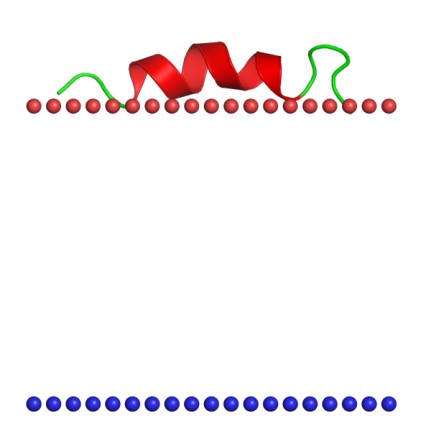With years of experience in the field of recombinant protein production and hundreds of successful cases, Creative Biostructure provides advanced Mempro™ cell-based membrane anchor helices of peripheral proteins production for academic and industry applications.
The membrane anchor helices of peripheral proteins are a large superfamily that contains anchor regions of peripheral membrane proteins. Members of anchor helices of peripheral proteins play critical rules in the peripheral membrane proteins' temporarily adhering to the plasma membrane or the penetrating the peripheral regions of the lipid bilayer. The anchor helices of peripheral proteins superfamily contain ten families including Anchor helix of glycosyl transferases group 1, Membrane anchor helix of BAR domain, Anchor helix of protein yopD, Membrane-binding domain of phosphotransferase IIA component, N-terminal helix of Disabled-2, FATC domain, Heat shock protein 9/12, Lipid interacting helix of digalactosyldiacylglycerol synthase, and N-terminal helix of Arf proteins and Lipid droplet anchoring peptide.
 Figure 1. Structure of Lipid interacting helix (227-245) of digalactosyldiacylglycerol synthase. (OPM)
Figure 1. Structure of Lipid interacting helix (227-245) of digalactosyldiacylglycerol synthase. (OPM)
With state-of-art platforms and facilities, Creative Biostructure can provide various cell based production systems for the production of target anchor helices of peripheral protein. Our science team will develop the optimal strategies according to the characteristics of target proteins or domains and your special requirements. All kinds of cell-based expression systems are available in Creative Biostructure, including:
Mempro™ Protein Production in Bacterial Cells System;
Mempro™ Protein Production in Yeast Cells System;
Mempro™ Protein Production in Incest Cells System;
Mempro™ Protein Production in Mammalian Cells System.
Bacteria systems (E. coli)
E. coli systems are the main force of bacteria systems and also the most applied systems in both academic and industry applications. The E. coli expression systems are our first choice in most of the cases. The E. coli expression systems have several advantages such as relatively low cost, fast, high yield, etc. But sometimes it will be difficult to expression some certain proteins correctly. Another limitation is E. coli systems can't achieve post transcriptional modifications (PTMs).
Yeast systems
Yeast expression systems combine the advantages of both eukaryotic and prokaryotic features such as being single cells, easy genetic manipulation and fast growth, the ability of perform PTMs, and a secretory pathway leading to correct protein processing.
Insect cell systems
Insect cell-baculovirus expression systems are powerful tools for producing high levels of recombinant protein. The insect cell systems are developed from transfected insect cells combined with vectors derived from baculovirus. Insect cell systems are relatively complex, but armed with advantages such as improved solubility, ability to incorporate PTMs, and higher yields for secreted proteins, etc.
Mammalian cell systems
Among all the cell based expression systems, mammalian cells are considered as the most powerful tool for the production of recombinant soluble and membrane proteins. The mammalian cells can provide nearly-native environments for the expression of eukaryotic proteins. The cost of the mammalian cell systems is relatively higher than that of other systems, and mammalian cell systems are more complex. Cell lines derived from multiple mammalian cells such as CHO, BHK-21, HEK293, COS, HeLa and GH3 are still widely applied for integral membrane protein production.
Creative Biostructure also provides other Mempro™ custom membrane protein production services with various advanced techniques. Welcome to contact us for more details.
Reference:
Sakamuro, D., Elliott, K. J., Wechsler-Reya, R., & Prendergast, G. C. (1996). BIN1 is a novel MYC–interacting protein with features of a tumour suppressor. Nature genetics, 14(1), 69-77.
Negorev, D., Riethman, H., Wechsler-Reya, R., Sakamuro, D., Prendergast, G. C., & Simon, D. (1996). The Bin1 Gene Localizes to Human Chromosome 2q14 by PCR Analysis of Somatic Cell Hybrids and Fluorescencein SituHybridization. Genomics, 33(2), 329-331.
C. Trometer, and P. Falson (2010). Mammalian membrane protein expression in baculovirus-infected insect cells. Methods Mol. Biol., 601: 105-117.
S. Schlegel, et al. (2013). Bacterial-based membrane protein production. Biochim. Biophys. Acta., 1843(8): 1739-1749.
